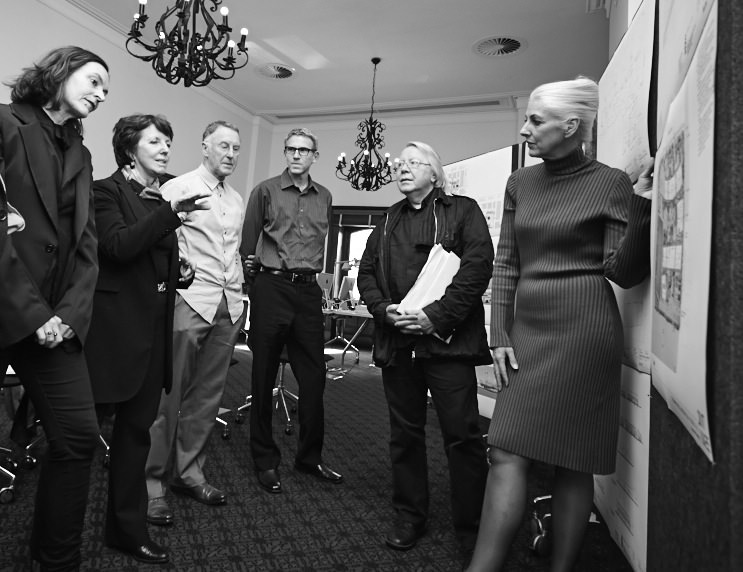Presenting to Government

How architects present in government contexts can have a large impact on their chances of getting the job, or gaining support for a project. Jill Garner, Victorian Associate Government Architect, offers some tips.
Presenting a government project
The Office of the Victorian Government Architect’s document ‘Government as Smart Client’ proposes a set of guidelines and strategies to embed design quality in buildings and places projects undertaken by government. The document first looks at the various project procurement methods used across government departments, then outlines the implications for design quality arising from each process. Finally, it offers a strategy to achieve buildings and places that promote community pride, identity and enduring legacy.
The OVGA aims to demystify the processes of procurement within government, which should have the benefit of changing the playing field for new work. It should be possible for firms with little experience in public sector work to be given opportunities – we see this as having benefit for Victoria’s built environment. However, landing public contracts is a challenge for the uninitiated architect, and government’s sensitivity to risk (which can be understood as a response to their role as stewards of taxpayer dollars) can restrict access to projects, impact quality, constrain innovation and promote the conventional.
Inexperience with government processes can also result in architects doing themselves an injustice in the way they present either themselves or their projects. The OVGA has been involved in the review of submissions for many projects across a diverse range of procurement processes including Quality Based Selection; Expression of Interest; Request for Proposal; Fee Tender; Competition and has also undertaken a significant number of design reviews of many project types through our Victorian Design Review Panel. In each situation an architect is either presenting as a potential candidate for a project, or is presenting a design response that is being evaluated through peer review.
An architect’s presentation skills – or lack thereof – can have a big impact in the way they, or their project, are received, and indeed on their ability to secure the job. We offer the following advice, based in our extensive experience of , to assist architects in this process.
Presenting as a potential candidate
There is no question that the process of presenting to government, through completing all required forms and responding to specific questions, is arduous and time consuming, and at times the emphasis can seem misguided. Nonetheless, until such time that processes can be streamlined through a method agreed by the diverse government parties involved in selection – as yet only a utopian ideal – it is essential architects engage in a serious and effective way with existing government processes.
Firstly, ensure that all forms are completed and all questions answered. Failure to complete the critical information effectively renders a submission non-compliant. In projects where the OVGA has an opportunity to be a voice for the less experienced firm, the lack of compliance creates an impasse. Secondly, we recommend brief, concise and focused responses to each question – quality over quantity every time. The OVGA encourages government consideration of statements of design approach and this helps to make all submissions project-specific. However, we strongly recommend brevity – regardless of quality, essays are likely to go unread.
Presenting a design response for peer review
We encourage architects who present projects to the OVGA or to our VDRP for peer review to understand and take advantage of the constructive nature of the design review process. Our expert panel provides a fresh independent viewpoint, supports good design intentions and if required, offers inspiration to search for better solutions. Project weaknesses can be identified at the earliest opportunity, which reduces risk and supports the best possible design outcome within particular project parameters.
It is disappointing when architects present projects for peer review in a manner that seeks unqualified affirmation of their own decisions, which have often been shaped by issues other than design quality. Once again, we recommend a brief, concise and focused verbal presentation to enable independent input that promotes buildings and places that elicit community pride and built legacy.
Presenters get the most out of review when they listen actively as opposed to defensively and are ready to accept rather than ready to refute.
In summary, the OVGA is doing its best to put effective processes in place to embed high quality design in government projects across Victoria. It is our premise that broadening the consultant field will contribute to this aim, and to this end we encourage architects to be both responsible and responsive to ensure they are perceived in the best possible light.
Jill Garner is Associate Victorian Government Architect, and co-founder of Garner Davis Architects.
